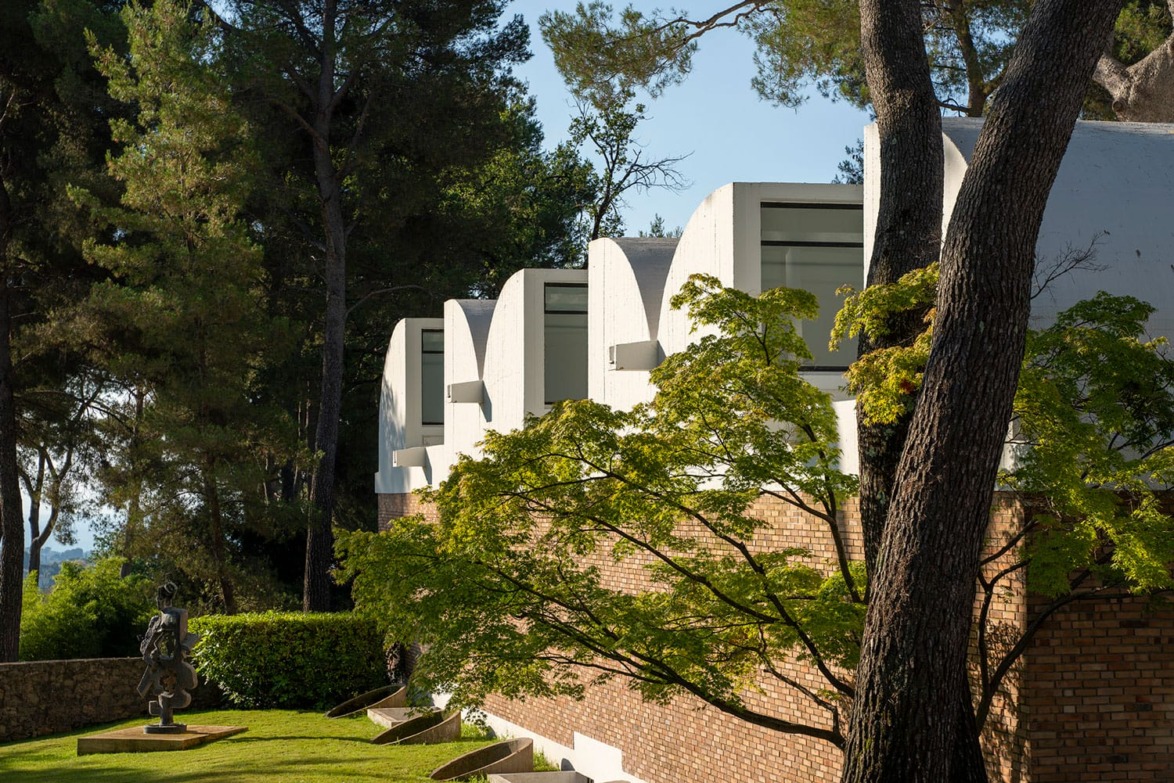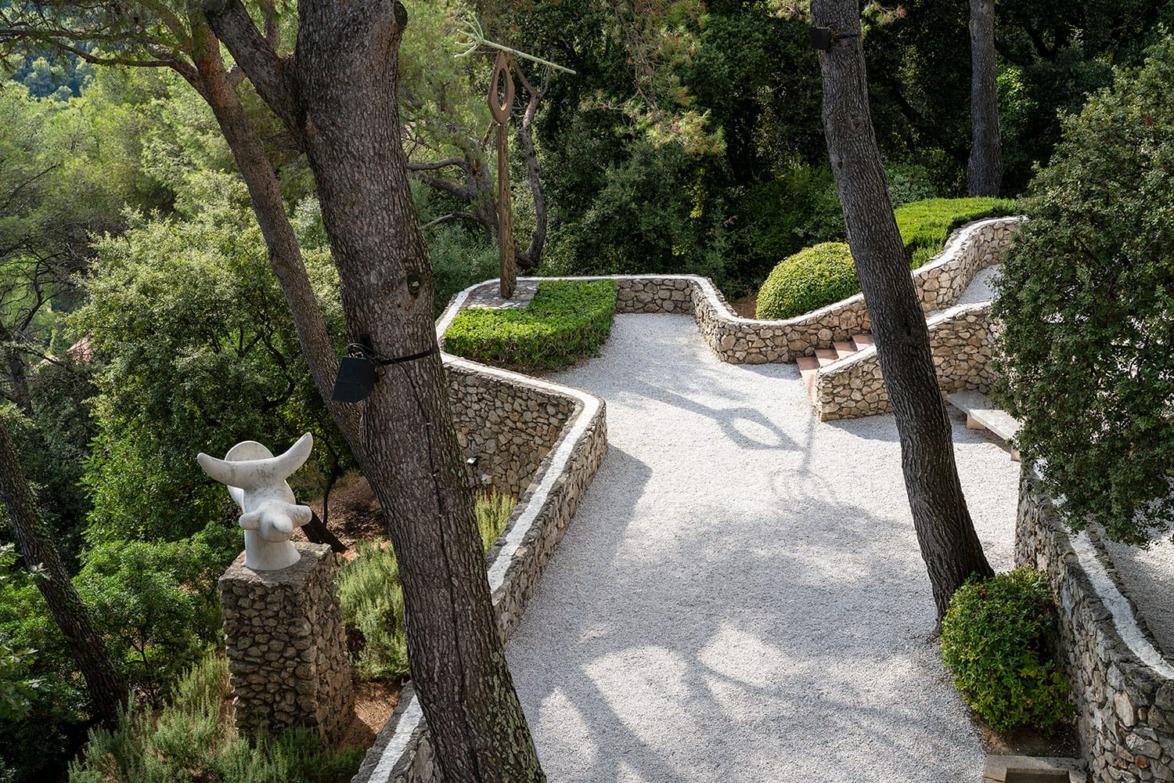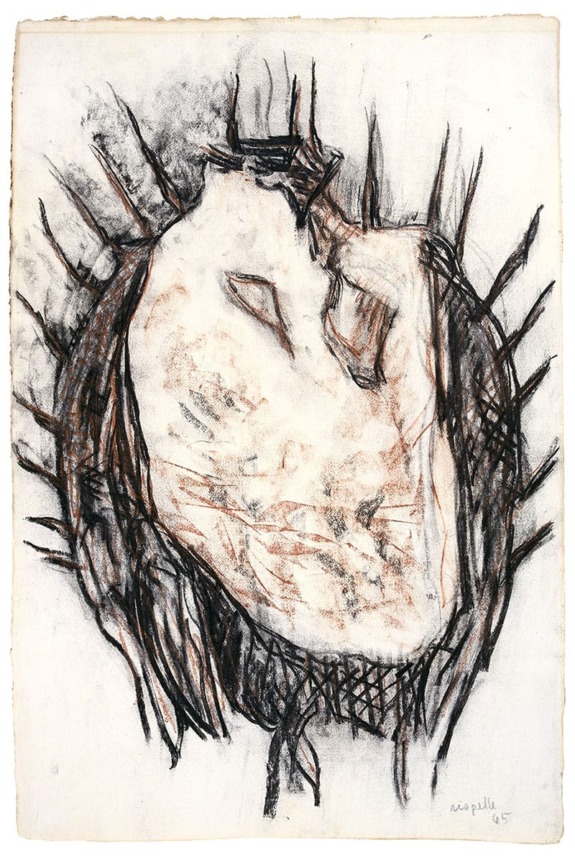Why Fondation Maeght in the South of France Is a Must-Visit Destination This Summer
The striking art space hosts an installation of work by Jean-Paul Riopelle, while Michelin-starred Les Agitateurs takes over the on-site restaurant

There have always been several reasons to visit the Fondation Maeght in Saint Paul de Vence in the South of France. One is its amazing 13,000- piece collection of 20th Century art, including an abundance of works by Pierre Bonnard, Georges Braque, Alexander Calder, Joan Miró, and Wassily Kandinsky. Another is the handsome building by Josep Lluís Sert completed in 1964 to show off a fraction of the work. Then there’s the newly renovated Alberto Giacometti courtyard, containing two Tall Women and three Standing Man sculptures. “It was originally conceived for a Chase Manhattan bank,” says Maeght’s director Nicolas Gitton. “Until Mr. Rockefeller decided he didn’t want it.”
This summer, though, there are even more. A massive exhibition of the “automatiste” French Canadian artist Jean-Paul Riopelle is taking place, and the bucolic outdoor restaurant has been taken under the wing of Les Agitateurs, a Michelin–starred place in nearby Nice. Here, though, you can indulge in a two–course prix fixe, sitting on an original 1960s Diego Giacometti chair, while a bubbling kinetic fountain by Pol Bury raises and lowers it metallic arms nearby.


Aimé and Margherite Maeght (pronounced Maggt) were exceptional Paris art dealers who, by the early 1960s, had amassed such an impressive collection of works they decided it needed its very own home. They invited their artist friends to contribute fully to the project: Apart from Giacometti’s courtyard, there is a labyrinth by Joan Miró, filled with sculptures from his imaginary bestiary and decorated with ceramic friezes. He even specified the size of the gravel. (Louis Vuitton showed its 2019 Cruise collection here.) George Braque designed a pool in which his beautifully rendered fish appear to float, and Marc Chagall dedicated a stunning mosaic to the couple.
The Maeght became France’s first private art foundation, and with its rural setting, exquisitely placed outdoor works, site–specific interventions, and architecturally significant building, it has provided a blueprint for many that have followed all around the world.


Over the years, the Sert building has been modified—courtyards filled in to make more galleries, a kennel tacked on the back for guard dogs. When Gitton joined in 2019, he set about fundraising in order to undo some of the unappetizing changes and to create a large but invisible extension to show more work that’s set to open next year. “Right now we don’t get to show a fraction of our masterpieces,” says Gitton. “The reputation of the foundation rests upon them, though, and once the expansion is complete, we can show many more on rotation. A lot of people come to Maeght for the gardens and the general experience—it’s on the south of France tourist trail—but I feel that it acts as a gateway to modern art, and it’s important how we present it here.” Last year, it received an astonishing 200,000 guests, and those who visit this year can see La Vie, Marc Chagall’s greatest work.

The exhibition of Riopelle has been curated by his daughter from his first marriage, Yseult, herself a sculptor. Like her father, who died aged in 2002 aged 81, she has moved between between France and Quebec. From 1955 to 1979, Riopelle lived next to Joan Mitchell in Vertheuil, France,, conducting a frequently furious and fueled relationship with the American artist. “Of course you can see how they influenced each other’s work,” says Gitton, noting Riopelle appears a more restless practitioner, moving from abstraction to figuration, through sculpture and printmaking, collage, silverpoint, pastel, tapestry, and assemblage.
His particular passion was to hide day-to-day objects in his sculptures. Yseult points out a head that has been fashioned from a cleverly disguised snow shovel as well as an owl made from a casserole pan. Once he started returning to Canada in the late 1970s, he made vast black-and-white landscape paintings of icebergs. The Fondation Maeght exhibition “Essence of Studios,” on view through November 12, ends with a heroic work by Mitchell, as if to underline the connection.


The foundation is 60 next year, and Gitton is optimistic for its future. He is staging a Matisse and Bonnard show to celebrate its birthday, to be followed by presentations of work by Barbara Hepworth in 2025 and Ellsworth Kelly in 2026. “Kelly first showed at the Maeght’s Paris gallery in 1947,” says Gitton. “He was in France thanks to the GI Bill, with his then boyfriend Jack Youngerman. So we have some really great examples of his work.”
As we walk through the gardens, Gitton points out the aging pine trees which have to be carefully monitored. “They weren’t meant to live for centuries, so we have to keep an eye on them. But each time one has fallen, it’s always missed a sculpture,” he says and sighs. “There is a shield of love protecting this place.”